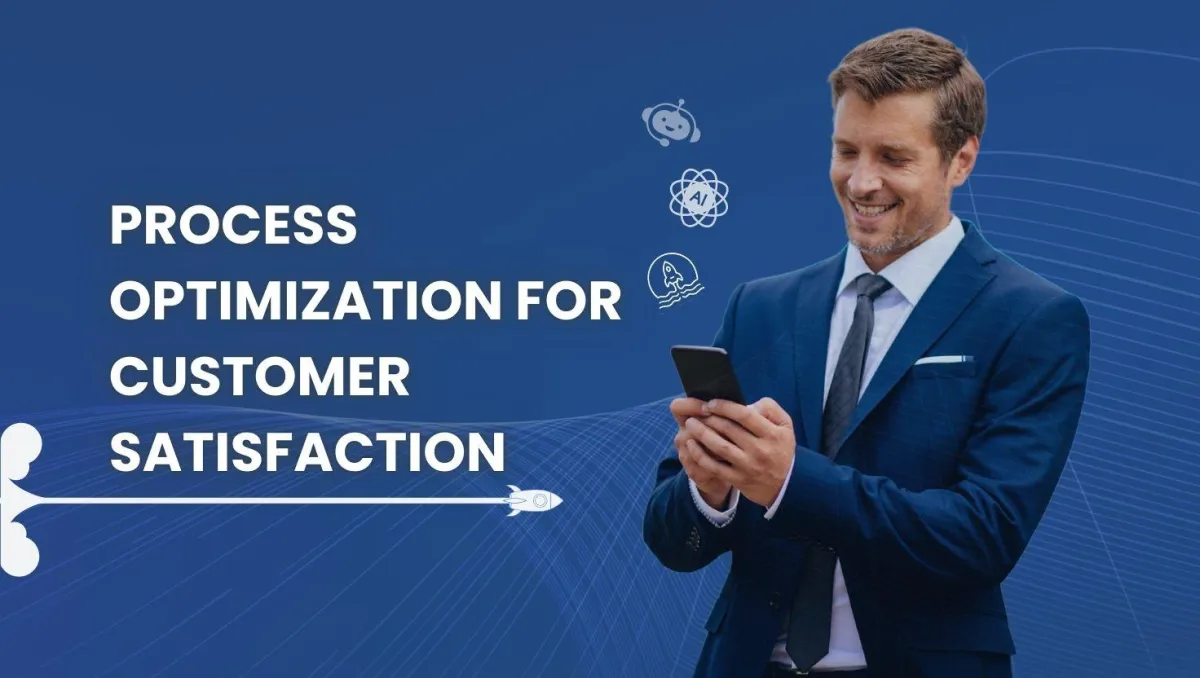
How Smart Businesses Use Process Optimization for Customer Satisfaction
Every business owner knows that keeping customers happy is key to their business's success. When running a company, you sell products or services and ensure every interaction counts. Focusing on process optimization for customer satisfaction starts building smoother operations that keep clients returning.
In this blog post, you'll explore how process optimization for customer satisfaction can serve as a foundation for growth and set your business apart from the competition. We'll share simple strategies to help you boost efficiency and improve the overall customer experience.
So, you're in the right place if you’re a startup owner, a seasoned entrepreneur, or perhaps someone curious about improving your work processes. We are sure this article will empower you to optimize your processes and satisfy your valued customers.
Let's start by first understanding process optimization.
What Is Process Optimization?
Process optimization means systematically analyzing and improving your business workflows to increase effectiveness and efficiency. It involves identifying bottlenecks, removing unnecessary steps, and ensuring every step adds value to the customer experience.
Effective process optimization has become crucial for businesses to stay ahead of the competition. It allows organizations to boost operational performance while also increasing customer satisfaction.
A Bain & Company study found that 21% of businesses implementing process optimization strategies achieve at least 10% cost savings. These savings reduce overhead and allow companies to invest in quality improvements and faster service delivery, improving the overall customer experience.
The Importance of Process Optimization for Customer Satisfaction

In an era when 80% of customers believe that a company's experience is as important as its products or services, optimizing processes is essential.
When your processes run like a well-oiled machine, customers enjoy quick responses, fewer errors, and a personal touch that truly makes them feel valued. This boosts customer retention and attracts new clients through glowing reviews.
Optimized processes can make all the difference for small businesses with limited resources and allow you to deliver big results without a big budget. In today’s market, you can't afford to let inefficiencies get in the way of providing exceptional service.
👉 Want to scale your business faster? Learn How Can You Influence Automation of Manual Processes to Scale Your Business Faster and watch your productivity soar!
5 Step Process Optimization Strategies for Happier Customers
Modifying your business operations may seem daunting, but breaking it down into simple, actionable strategies can open the door to success. Let's look at some proven strategies for process optimization to ensure customer satisfaction.
Step 1: Analyze Your Current Workflow
Start by mapping out every step of your customer journey. You can use tools like flowcharts or customer journey mapping software. Don’t just list the steps; dig deep into each touchpoint.
For instance, track the time customers spend on your website, the duration of each call with customer service, and the follow-up process after purchase.
Now, identify where delays occur and pinpoint repetitive manual tasks that are slowing service. Use analytics to uncover hidden pain points, and consider conducting workshops with frontline staff to gather firsthand information.
👉 Ready to free up time and boost productivity? Check out Transform Your Routine With Small Business Workflow Automation to see how automation can simplify your daily tasks!
Step 2: Automate Repetitive Tasks

Automation helps you save time, letting your team concentrate on the human aspects of service that machines can’t replicate. You can consider automating routine tasks such as email follow-ups, order confirmations, and appointment scheduling using platforms like Mailchimp, Zapier, or dedicated CRM systems.
For example, an automated system can send updates at fixed intervals if customers frequently ask about order statuses. Plus, automation can help standardize responses, reduce errors, and make sure that no customer inquiry slips through the cracks, therefore boosting overall satisfaction.
Step 3: Gather Continuous Feedback
“I think it's very important to have a feedback loop, where you're constantly thinking about what you've done and how you could be doing it better.” – Elon Musk.
If you genuinely want to understand what your customers and employees think about your processes, build a feedback loop into your daily operations. Use surveys, focus groups, or quick in-app polls to gather real-time data on customer experiences.
Look into applying Net Promoter Score (NPS) surveys to quantify satisfaction and pinpoint areas for improvement. Also, don’t collect feedback only from customers; engage your employees, too. They often have useful insights into what might be causing delays or frustrations.
👉 Looking to level up your business efficiency? Explore How AI for Small Business Can Save Time, Cut Costs, and Drive Sales to discover smart ways to grow with less effort!
Step 4: Invest in Employee Training
Even the best processes fall flat without the proper execution. That's why you have to make sure your team is aware of the new systems and comfortable using them.
Arrange regular training sessions, workshops, or online courses that revolve around the updated workflows and automation tools. Highlight real-life scenarios and role-playing exercises to show how the new processes boost customer interactions.
When employees understand the 'why' behind each change, they’re more likely to embrace it and contribute ideas for further improvements. So, invest in training, develop a culture of continuous progress, and allow your team to deliver exceptional service.
Step 5: Monitor Performance Metrics

Measure the impact of your changes regularly; it’s important for continuous optimization. Define clear metrics that matter to your customer experience, such as average response times, resolution times, error rates, and customer satisfaction scores.
Use dashboards and analytics tools to track these metrics immediately. For instance, if you notice a dip in your NPS after a process change, investigate further to find the cause.
Together with your team, regularly review these metrics and adjust your processes accordingly. This ongoing monitoring will provide a roadmap for future improvement and ensure that your customer service continues to develop to meet changing demands.
Tools & Technologies for Process Optimization for Customer Satisfaction
Have you ever wondered how top companies like Amazon, Apple, Ikea, and others keep their customers happy? The secret often lies in the tools and technologies they use to streamline their processes. Here, we'll explore some of these game-changers.
AI and Machine Learning
Artificial intelligence and machine learning are emerging trends transforming how businesses operate. They can analyze large amounts of data to predict customer behaviour, which helps companies anticipate needs and tailor their services accordingly.
Customer Relationship Management (CRM) Tools
Imagine having all your customer information in one place, accessible with a click. CRM tools offer this. They manage customer data, automate marketing tasks, and personalize communications.
By offering features such as omnichannel engagement and AI-powered analytics, CRMs ensure every interaction is consistent and tailored to individual requirements—boosting satisfaction and loyalty.
👉 Want to simplify lead management and boost engagement? Check out CRM Automation Guide: Simplify Lead Management & Engagement! and see how automation can do the heavy lifting for you!
Process Mapping Software
Ever tried assembling furniture without instructions? It's challenging, right? Process mapping software provides the much-needed instructions for your business operations.
These visual tools enable you to map out every step and make it easier to spot inefficiencies and areas for improvement. By improving workflows, you can increase productivity and, in turn, customer satisfaction.
Common Challenges in Process Optimization for Customer Satisfaction

Resistance to Change
It could be daunting for employees to oppose change. They may resist new processes, possibly fearing increased workloads or unfamiliar technology.
Encourage your employees in discussions about upcoming changes and offer support; this will alleviate concerns and build trust. Clear communication and comprehensive training can, no doubt, help ease these transitions.
Technology Integration
Introducing new tools can also be challenging, especially if your systems are outdated. To deal with this, implement step-by-step changes and allow your employees to familiarize themselves with new technologies. This will reduce resistance and boost overall efficiency.
Budget Constraints
Although process optimization can yield long-term savings, the initial investment may be a hurdle for certain businesses. To manage costs effectively, you can prioritize critical areas for improvement.
Concentrating on processes directly impacting customer satisfaction or operational efficiency can result in quick wins that justify the expenditure.
How Purely Startup Helps With Process Optimization
At Purely Startup, we bring a fresh, hands-on approach to process optimization. Our team starts by thoroughly analyzing your existing workflows to identify crucial areas for improvement.
With the integration of advanced AI and strategic automation, we simplify complex tasks and reduce manual work, saving you time to focus on creativity and growth.
We believe in a collaborative partnership.
Working side by side with your team to personalize solutions that fit your unique needs, we continuously monitor and commit to ongoing improvement, assisting you in staying agile, competitive, and ready for tomorrow’s challenges.
Final Word from Purely Startup
In a competitive business market, building strong, lasting relationships with your customers is essential. Every business wants happy, returning clients who feel truly cared for. Refine your operations in a way that places genuine attention on your customers' needs. As a result, you'll create memorable experiences that make them feel valued.
Adopt process optimization for customer satisfaction through careful, thoughtful steps to improve the customer experience at every touchpoint. Customers who experience smooth and pleasant interactions are more likely to stay and recommend your services to others.
Ready to transform your operations and see accurate results? Book a consultation today and experience the Purely Startup difference.


